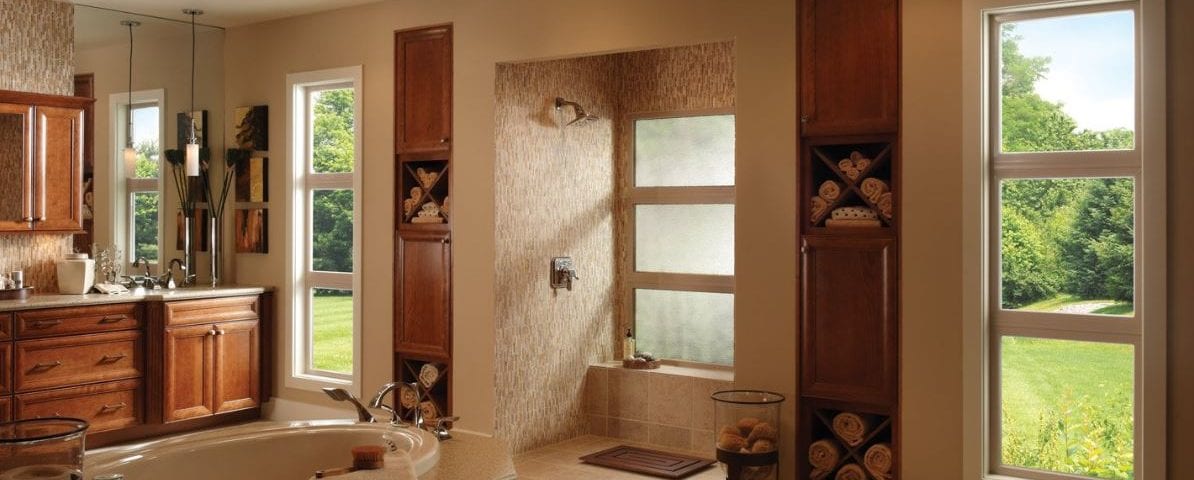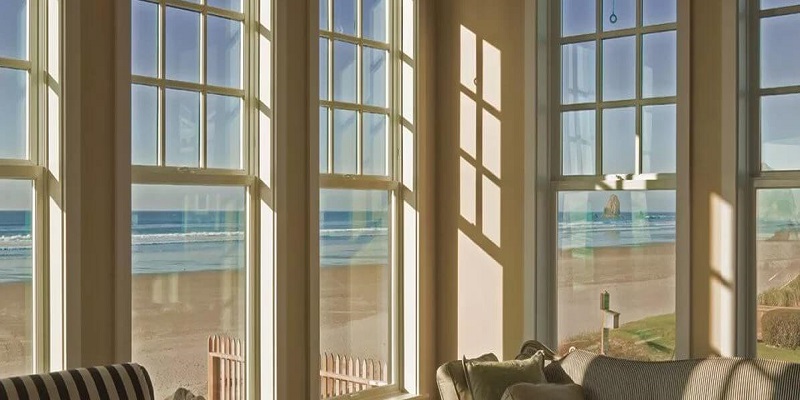- Contact Us Today
- (760) 598-6422
- Get a Quote
What is Between the Glass?

When it comes to the glass on your replacement windows in San Marcos, CA there is plenty the eye can’t see. Insulated glazing units (IGUs) are made up of two or more panes of glass set apart by spacers and sealed together as a single unit. And manufacturers go to great lengths to make sure IGUs are durable, safe, and energy efficient. These are just a few of the glazing technologies to be aware of:
Types of Safety Glass
Annealed glass is weak and dangerous. It shatters into large, jagged shards with very little force and was not ideal for windows. Modern windows have either tempered safety glass or laminated safety glass.
Tempered glass is cut to size and heated to approximately 600 degrees. Then it is rapidly cooled under high pressure leaving the center of the glass in tension and the exterior surface in compression. This process strengthens the glass so it can withstand more than 10,000 psi. And if the tempered glass does get broken the glass breaks into tiny, harmless pieces.
Laminated safety glass undergoes a different process because manufacturers use heat and pressure rollers to sandwich a layer of polyvinyl butyral (PVB) between the panes of glass. This is the type of glass used on windshields. The interlayer helps keep the glass intact, even if it breaks. So you may get spider web cracks, but most of the glass remains inside the frame.
Types of Inert Gas Fills
It isn’t normal air or even a vacuum between the panes of glass on IGUs. Manufacturers use gasses that have more density than air. This slows down heat transfer without blocking visible light. The three most common gasses are argon, krypton, and xenon.
Argon gas makes up about 1% of the earth’s atmosphere, which means it is more readily available than the other noble gasses. It has 67% better energy efficiency than normal air, which makes it an affordable and popular gas fill for IGUs.
Krypton gas is not as common, which makes it a bit more expensive to use on replacement windows. But it has better energy performance and works in tighter spaces. This is why manufacturers often use Krypton gas in triple-glazed windows.
Xenon gas is fairly new to the window market and is cutting edge insulation technology. It has better energy performance than both argon and krypton. But this gas comes at an even higher price tag and the energy savings don’t often compensate for it. That is why Xenon gas is often reserved for businesses that want to achieve LEED certification.
Types of Special Coatings
The last glazing technology is the special coatings applied to different surfaces of the glass. The first coatings are basic applications that obscure the glass for privacy. The next coatings are window tints are meant to block certain wavelengths of light to reduce glare and heat transfer. And low-E coatings are ultra-thin metallic oxide coatings applied to the glass to reflect radiant heat but allow visible light to transfer through.
For more information about these glazing technologies, you should talk to an expert at Pelican Replacement Windows. Our experts can walk you through the value of each glazing option and help you choose replacement windows in San Marcos, CA with the best value. Call us at (760) 598-6422. Or stop by 2210 La Mirada Dr., Vista, CA 92081.

